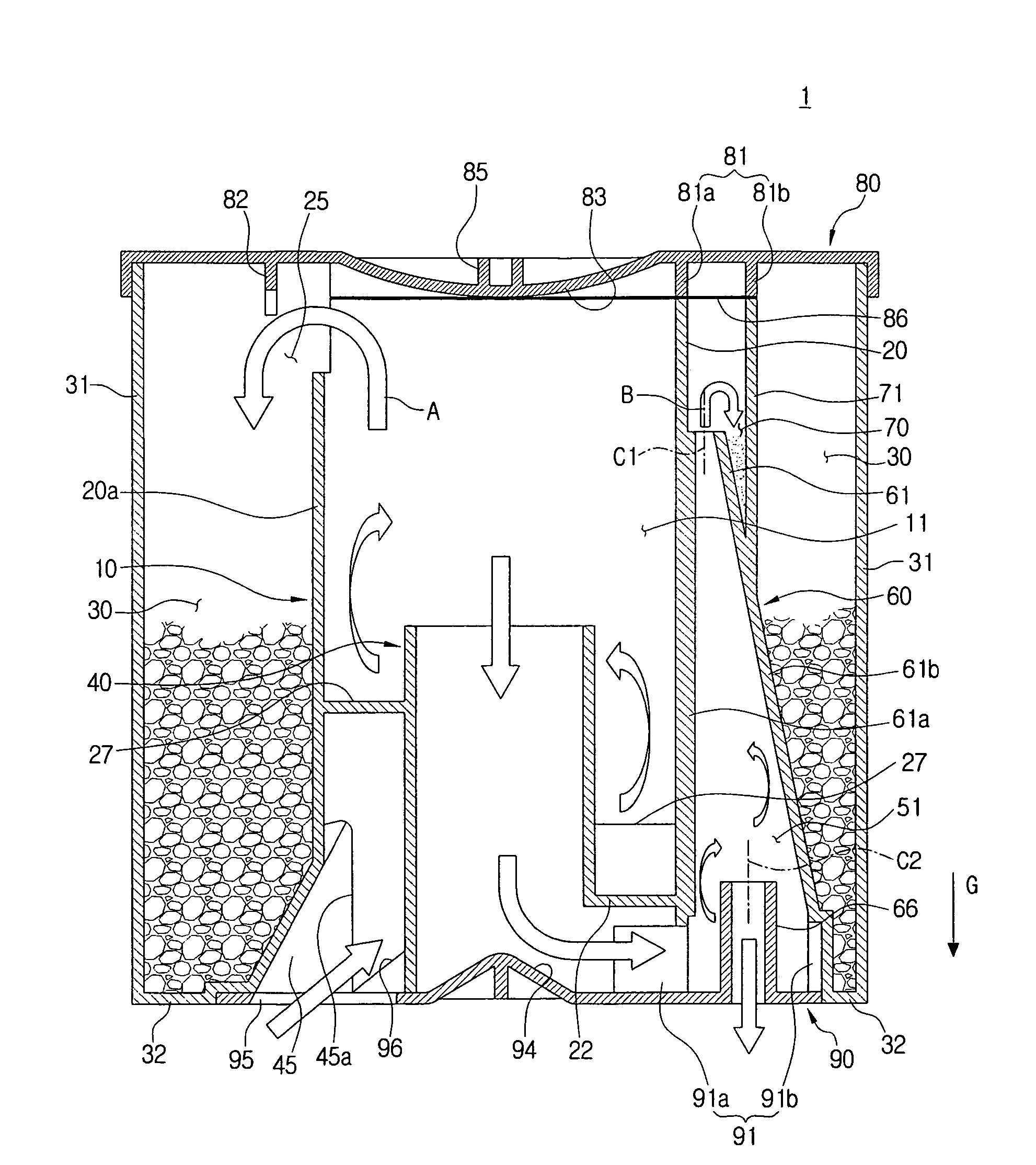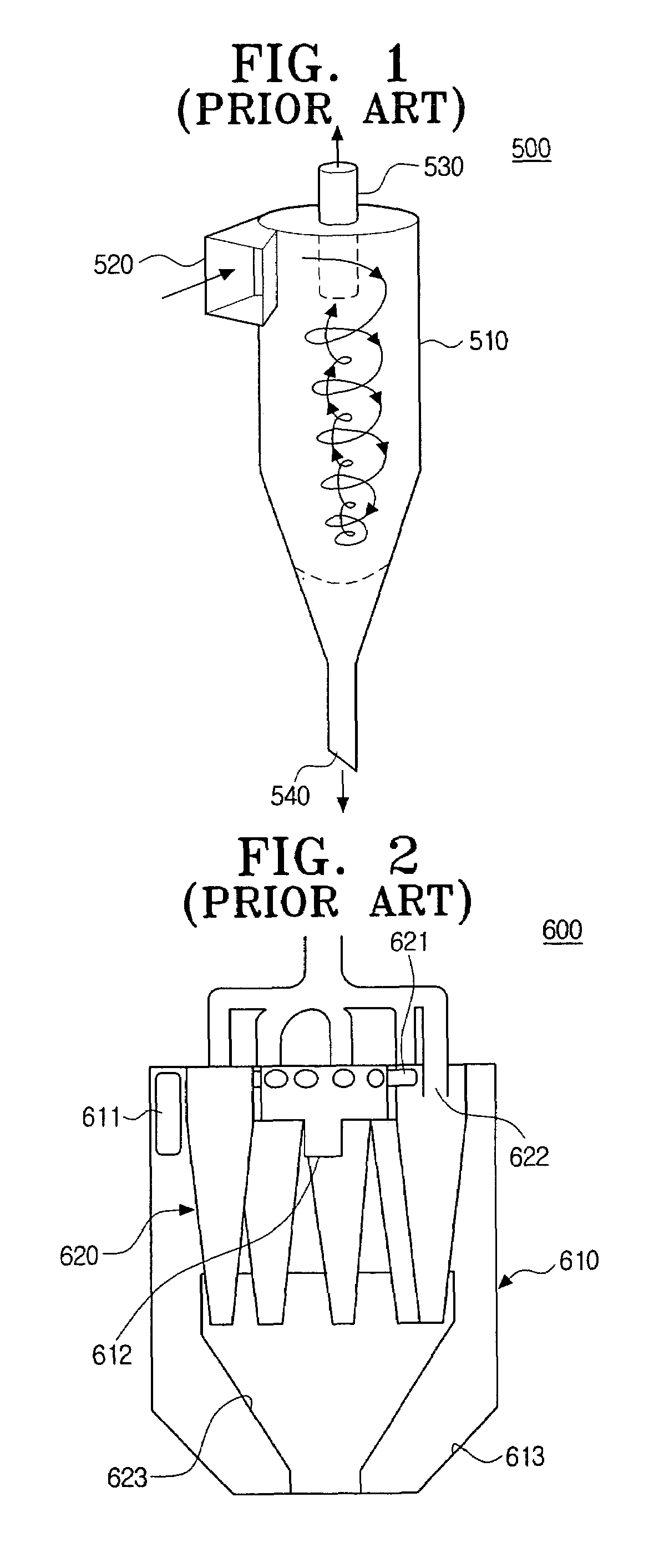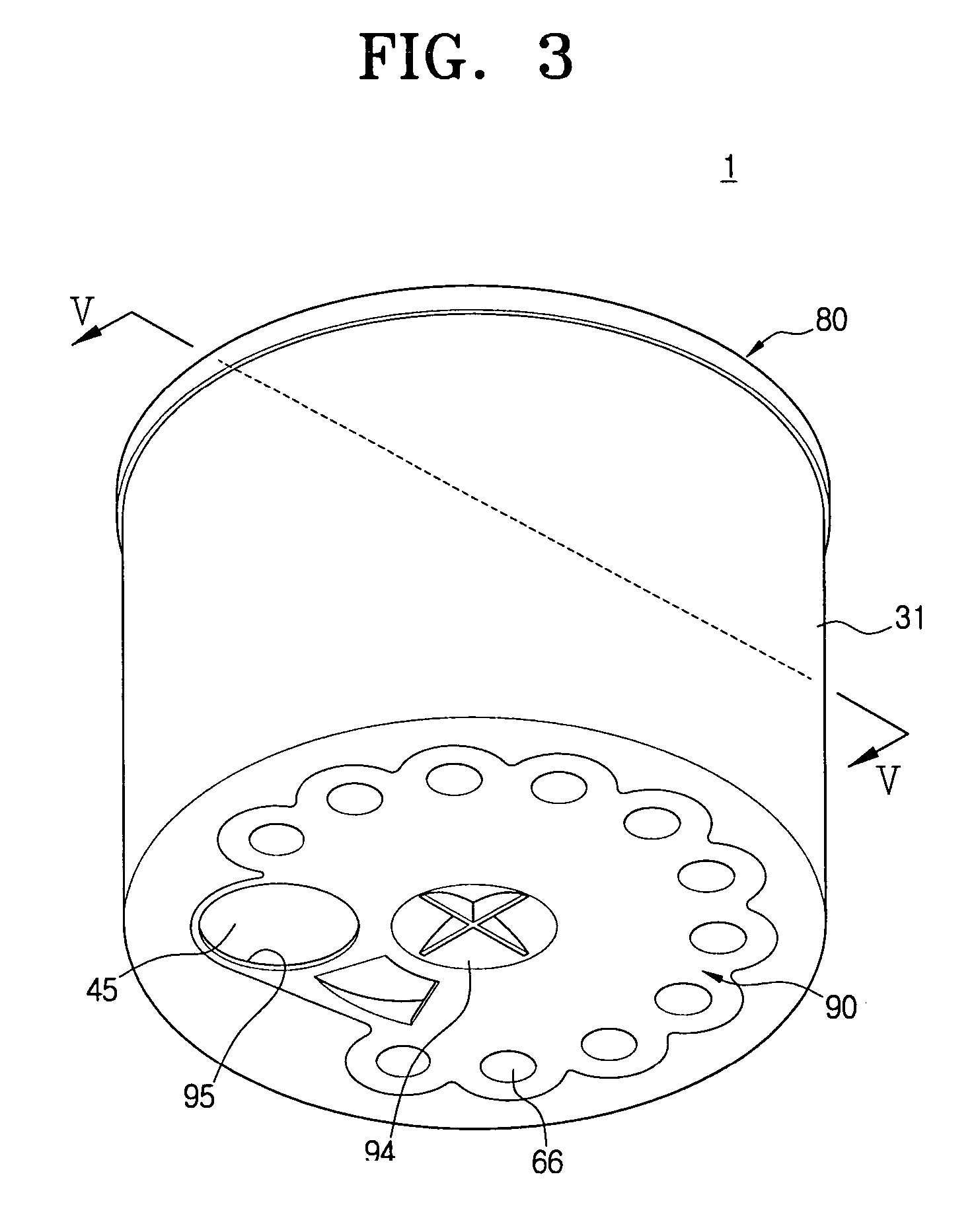Multi cyclone dust collector for a vacuum cleaner
a vacuum cleaner and dust collector technology, applied in the field of vacuum cleaners, can solve the problems of high height and decreased dust collection efficiency of dust collectors, and achieve the effect of convenient us
- Summary
- Abstract
- Description
- Claims
- Application Information
AI Technical Summary
Benefits of technology
Problems solved by technology
Method used
Image
Examples
first embodiment
[0077]Referring to FIGS. 3 to 5, a multi-cyclone dust collector 1 for a vacuum cleaner of the present invention includes a first cyclone 10, a first dust collecting chamber 30, and a second cyclone unit 50.
[0078]The first cyclone 10 employs at least one cyclone, and takes in air that is sucked through a suction brush 110 (see FIG. 15) and contains contaminants and dust (hereinafter, referred to as a contaminants-laden air). The first cyclone 10 forces the air to enter into a lower portion of the first cyclone 10 and to whirl upwardly so as to separate contaminants from the contaminants-laden air by centrifugal force operating upon the whirling contaminants-laden air current. In other words, the first cyclone 10 forms the contaminants-laden air entering in a direction opposite to the gravity direction (in a direction opposite to arrow G in FIG. 5) through the lower portion thereof into a first upwardly whirling air current, so that the first cyclone 10 centrifugally separates contam...
second embodiment
[0102]The contaminants-laden air flowing to the multi-cyclone dust collector 1 is entered into a lower portion of the first cyclone body 20 through the air suction pipe 45. The contaminants-laden air sucked into the first cyclone body 20 forms the first upwardly whirling air current that whirls upwardly inside the first cyclone body 20. At this time, the contaminants-laden air entering the lower portion of the first cyclone body 20 easily forms the first upwardly whirling air current due to the sloping surface 27 disposed before the exit 45a of the air suction pipe 45 on the bottom surface 22 of the first cyclone body 20. Then, contaminants are separated from the contaminants-laden air by the centrifugal force operating upon the first upwardly whirling air current. The separated contaminants are moved in a direction opposite to the gravity direction (in a direction opposite to arrow G), and then are discharged to the first dust collecting chamber 30 over the top end of the first cyc...
third embodiment
[0110]Hereinafter, a multi-cyclone dust collector 3 for a vacuum cleaner of the present invention will be explained in details referring to FIGS. 12 and 13.
[0111]Referring to FIGS. 12 and 13, a multi-cyclone dust collector 3 for a vacuum cleaner according to third embodiment of the present invention includes a first cyclone 310, a first dust collecting chamber 330, a plurality of second cyclones 360, and a plurality of second dust collecting chambers 370.
[0112]The first cyclone 310 is disposed at a substantially center of the multi-cyclone dust collector 3, and sucks contaminants-laden air, which are sucked through a suction brush 110 (see FIG. 15), into a lower portion of the first cyclone 310 in a direction opposite to the gravity direction (in a direction opposite to arrow G). The first cyclone 310 forces the contaminants-laden air to whirl upwardly inside the first cyclone 310 so as to form a first upwardly whirling air current and to separate contaminants from the contaminants...
PUM
| Property | Measurement | Unit |
|---|---|---|
| size | aaaaa | aaaaa |
| gravity | aaaaa | aaaaa |
| height | aaaaa | aaaaa |
Abstract
Description
Claims
Application Information
 Login to View More
Login to View More - R&D
- Intellectual Property
- Life Sciences
- Materials
- Tech Scout
- Unparalleled Data Quality
- Higher Quality Content
- 60% Fewer Hallucinations
Browse by: Latest US Patents, China's latest patents, Technical Efficacy Thesaurus, Application Domain, Technology Topic, Popular Technical Reports.
© 2025 PatSnap. All rights reserved.Legal|Privacy policy|Modern Slavery Act Transparency Statement|Sitemap|About US| Contact US: help@patsnap.com



